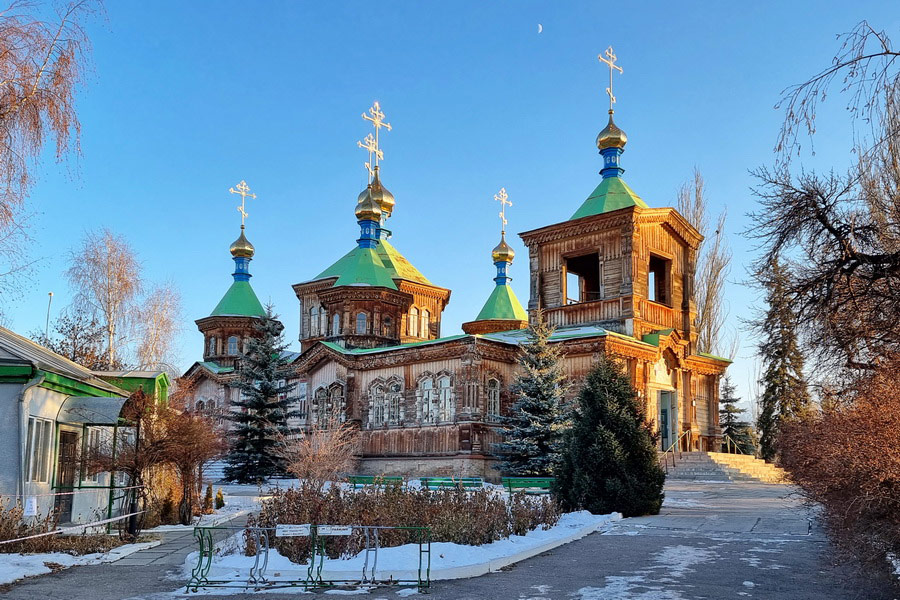Holy Trinity Orthodox Church, Karakol

Holy Trinity Orthodox Church is one of Karakol’s most prominent architectural landmarks and a striking example of wooden ecclesiastical design, deeply rooted in local building traditions. The church has a complex and eventful history. Over the years, it has served not only as a place of worship, but also as a warehouse, military party club, and even a sports hall. Despite these transformations, the cathedral has preserved its distinctive architecture and emerged as a vital spiritual and cultural symbol of the city.
History
The original church was erected in the second half of the XIX century, but it was almost entirely destroyed by a powerful earthquake in 1889. A new five-domed church with a bell tower was built with the active support of the Maslikov family, prominent merchants in Karakol. Before the revolution, the cathedral housed an impressive library with more than a thousand printed works. However, during the early Soviet era, the church was looted and suffered significant structural damage. Restoration efforts began in the post-war years, but only the central part with the main dome could be rebuilt.
In 1961, a shift in party policy once again removed the church from religious use - this time for three decades. The building regained its wooden façade and several domes during the years of Kyrgyzstan’s independence. The Orthodox community reclaimed the church in 1992, though it was then in a state of severe disrepair. Local residents, moved by a sense of duty and faith, financed and carried out extensive restoration work. By 1995, the Holy Trinity Orthodox Church had regained its original appearance and was officially returned to the Orthodox Church.
Architecture
The church features a three-nave layout with a rectangular apse. While the initial design envisioned a building in the shape of an equilateral cross, the final structure developed into a more intricate form - combining geometric precision with a layered, asymmetrical silhouette.
The walls are set on an ancient square brick base, supported by massive granite blocks reinforced with a cobblestone foundation. The entrance porch is paved with heavy stone slabs. The building is crowned with five gilded domes topped with Orthodox crosses. On the western side, a bell tower completes the ensemble, adding a vertical accent to the architectural composition.
